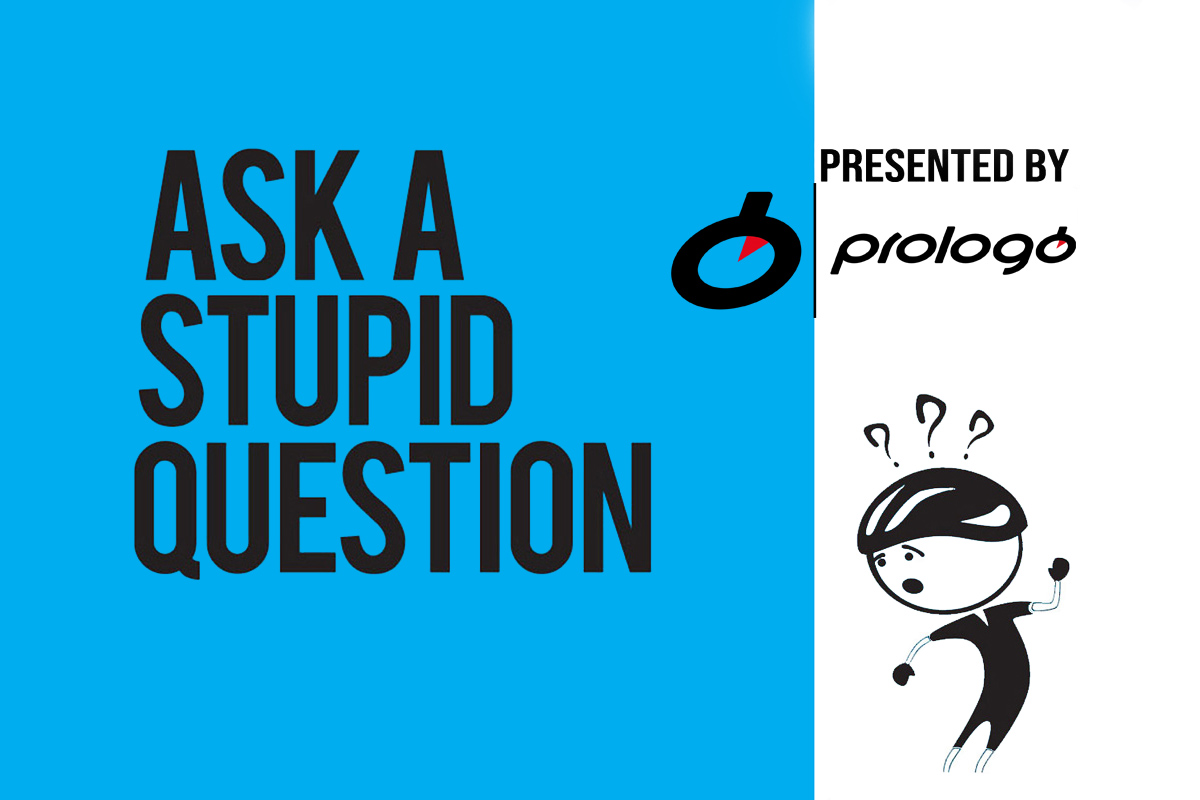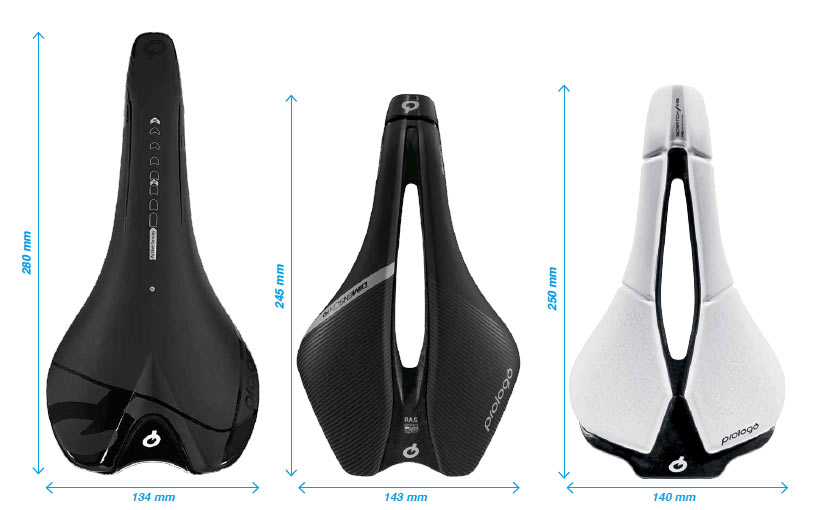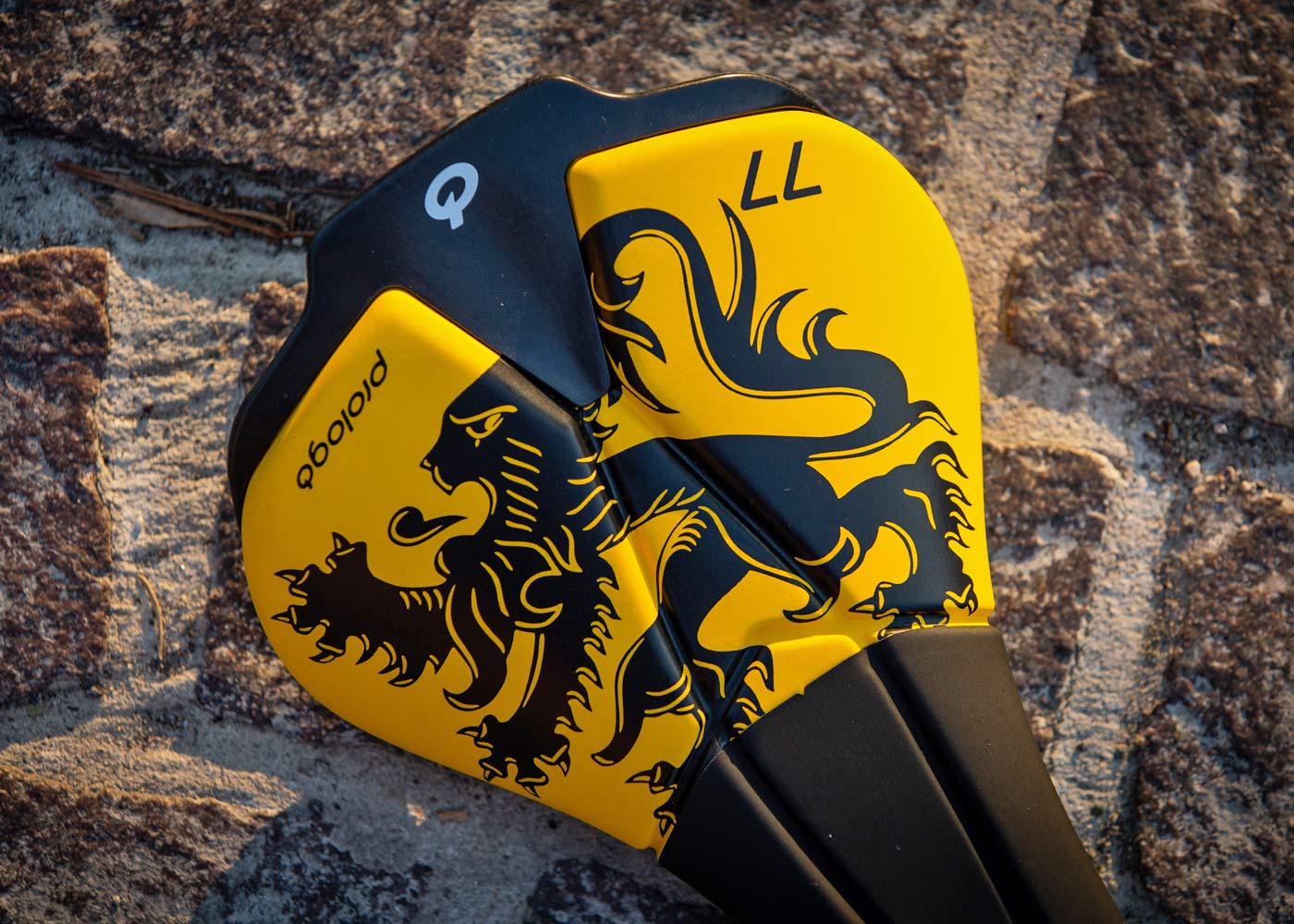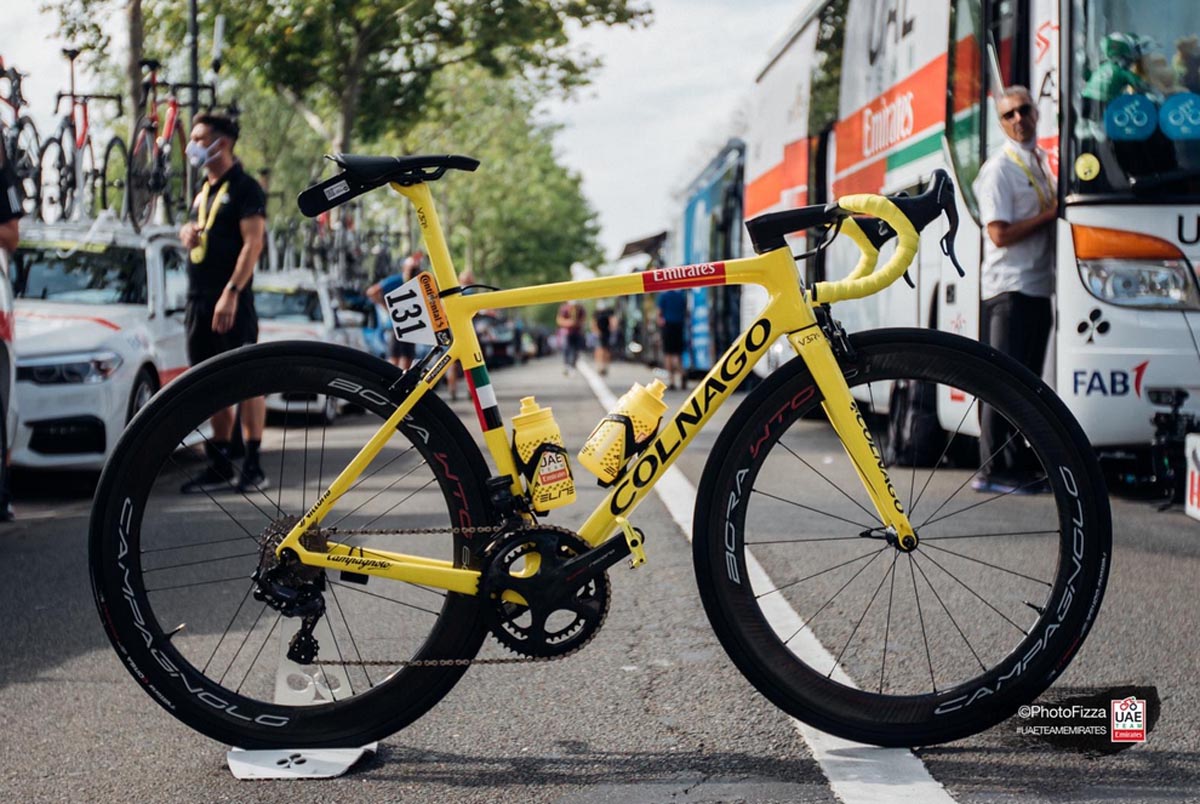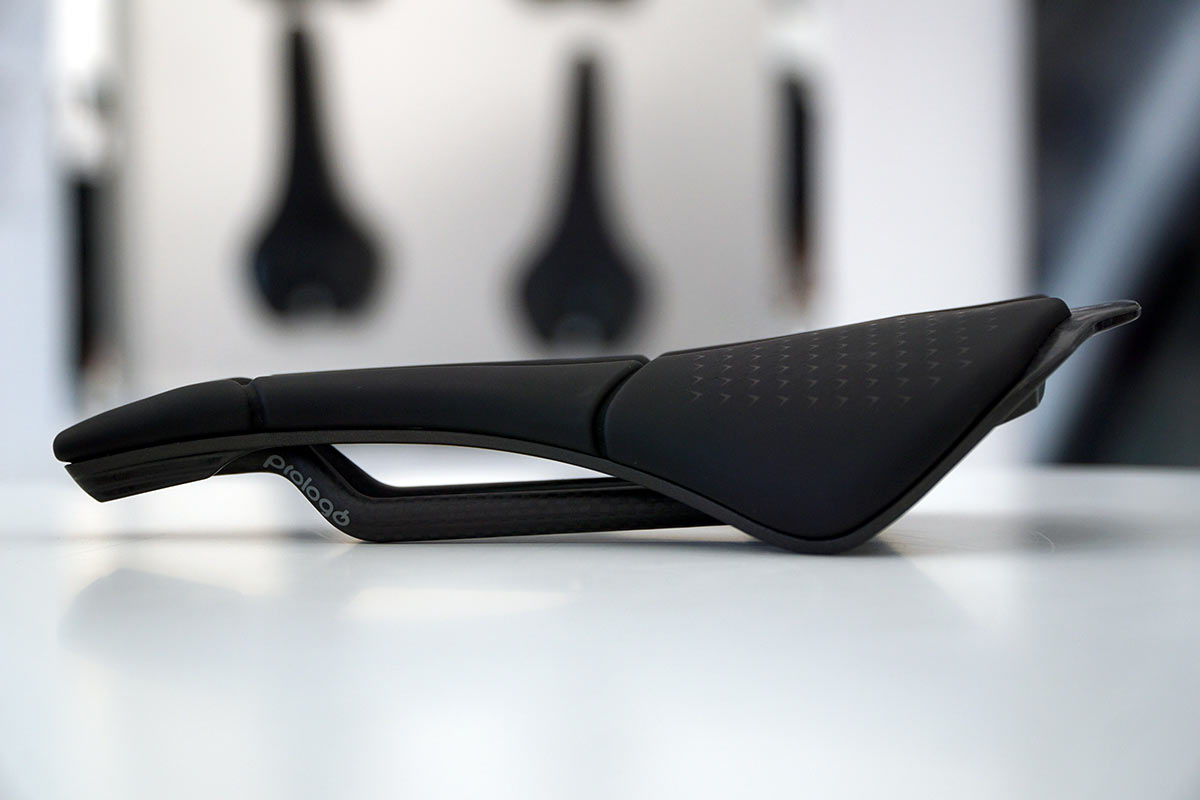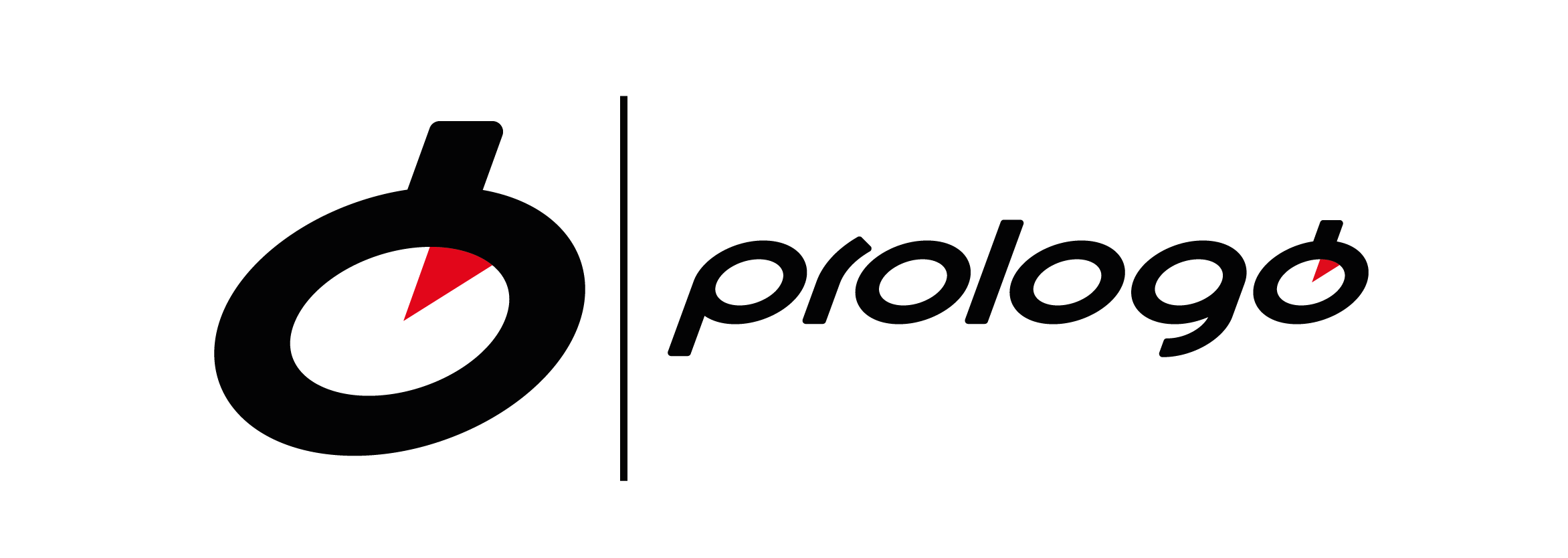We know, there’s no such thing as a stupid question. But there are some questions you might not want to ask your local shop or riding buddies. AASQ is our weekly series where we get to the bottom of your questions – serious or otherwise. This time it’s all about saddles with Prologo! Hit the link at the bottom of the post to submit your own question.
Saddle Fit
What are the steps to select the best saddle for me? Assuming I don’t have the budget to buy many and try them on. – Benoit
Choosing the right saddle is the most important thing to enjoy your ride. You can discover the perfect one for you without using any budget. We have developed an innovative but simple way to do so: our Myown fitting system. In just four simple steps our algorithm lets you know what is the model that best suits your features. First of all, you need to indicate what kind of discipline you practice: road, off-road, etc…. Then there is the measurement of the ischial bones. This is very important, because the saddle width needs to be aligned with the ischial bone width, so that you can avoid discomfort and pressure peaks. Then the hip flexibility is measured, by seeing how much you can tilt forward while sitting. In the end your BMI (body mass index) is added to the previous data: in this way our system indicates the best product for you. Then you have only to enjoy your ride.
How can you accurately measure your sit bones?
What’s the range of widths that correspond to sit bone widths ? Thanks – Pat
Prologo: The width varies depending on the anatomy. The range is 7-16 cm, that is why it is so important to know your measurement, to avoid a saddle that’s too narrow or too broad. Age and sex are the two main factors that influence it. To accurately measure the width we have developed a simple but effective way. Since the ischial bones are surrounded by soft tissues and the glutes, it could be difficult to find the bones’ extremities and to calculate the right distance.
Our Myown fitting system use a special box with a gel cover on it. By sitting on it the bones, being harder than the tissue around them, leave a mark on the gel. On the box there is a ruler, so it is possible to know the distance.
As a heavier rider, I find most saddles flex too much and I end up sitting in a hammock rather than the flat saddle I prefer. To overcome this I need to jam a section of rubber between the shell and the top of the seat post To help hold it up. In addition to shell flex, I can bottom out the padding too.
With the above in mind, why doesn’t anyone make saddles for different weight riders? I know a 55kg rider would find my preferred saddle stiffness too hard, so why should I sit on a saddle designed for a lightweight? – David
Prologo: It is true that every rider is different and needs a specific saddle. In our range we have options for everyone. For example this year we launched the “Scratch M5 Space”. It is part of the Scratch family, the same that helped Pogaçar to win the Tour de France, but designed for who wants to be as much comfortable as possible. Its width (147 mm) together with +5mm foam compared to the standard model let a better weight distribution. The broader the surface is, the better the weight is distributed and the less the saddle flex.
Myown measures the BMI (body mass index, a value that is obtained by combining weight and height), so that you can have the right saddle for your physique and anatomy.
Why do you use such awfully stiff foam on your saddles? I’ve tried your top 3 and really wanted to like them as they look so good aesthetically, but they were just downright abusive even on short rides on smooth roads. I’ve tried your saddles even going back 10 years and it’s always the same problem. I have never had this problem with Selle Italia, Shimano Pro, Specialized and a few other brands. But Prologo are always brutally stiff foam. I don’t understand why…. they look so good but my opinion is they are unridable and others I’ve met have all felt the same way. – Michelle
Prologo: The foam varies depending on the saddle you choose. Some prefer stiffness to have more stability and a more aero position, while others look for comfort by using a softer foam and/or more thickness. We have options for everyone and every discipline.
For example, our new models use an innovative technology called “multi-sector-system” (MSS). It was developed in collaboration with the biggest technical university in Italy, the Polytechnic of Milan. It consists in five different zones along the saddle, every one has a different density and a different foam. These areas work independently adapting to all the positions the cyclist can take, so that you can ride in full comfort but without losing performance or power.
Again, to avoid any discomfort on your saddle you can use our Myown fitting system. You can find the nearest Myown fitting system at your local retailer with our shop finder here.
What’s the best saddle angle? Is tilted forward vs backward better for comfort or an aero position or what? – Jason
Prologo: There is not a best angle, it depends on your feeling and anatomy. For sure if you’re doing a time trial and need to be aero you should tilt it forward, but if you have high hip flexibility it might not be necessary. Our suggestion to find the angle that best suits your needs is to start with a zero degree inclination and then adjusting based on your feelings. You should advance by “trial and error” adding 1mm in one direction or another. If you feel too much pressure then it is better to tilt the nose downward, while if you slip forward from the saddle then tilt it backward.
It seems like nose-less saddles or shorter saddles are growing in popularity. Does Prologo have anything in this category? Are they any better than regular saddles? – Ron
Prologo: Prologo was a Pioneer in talking about short saddles, in fact all our new products are 245-250 mm long instead of 275mm and the nose isn’t only shorter, but tilted forward as well, providing a better weight distribution.
This is part of our desire to provide unisex and ergonomic saddles. A shorter saddle offers many benefits: the main one is weight distribution. When the length is reduced the width is enlarged, (in average +3 mm) so that the sitting area is wider, diminishing numbness and pressure. A tilted and shorter nose is also helpful when you take an “aggressive position” pushing hard on the pedals: a reduced structure “forces” the rider to have a more efficient anatomical center.
Saddles in the Pro Peloton
Do you ever make custom saddles for your pro riders? – Anne
Prologo: Of course we do! We work very closely with our pro riders to let them perform at their best, taking at the same time useful feedback to develop the best products possible for everyone.
We make custom saddles for two occasions: to satisfy a need or to celebrate a victory. In the first case the rider asks for a special feature such as shape, weight, or thickness to better encounter their anatomy or riding style. We do our best to help them and then we take this innovation to the market.
The second case is to celebrate together. To us our partners are very important, so we like to share with them emotions and successes. We have made a celebratory custom version for Contador to relive his Tour de France and Giro Victories, for Sagan when he became World Champion, and for Alberto Bettiol after he reigned in the 2019 Tour of Flanders.
What is that device that hangs off the rear underside of the saddle on the professional riders bikes ? – Timothy
Prologo: Those are transmitters that the Pros use to gather data and stats useful for their strategy. They’re connected with the heart rate monitor and the cycle computer, and the data is transmitted to the sporting director, who can check how his riders are performing and change strategy in real time. Normally the values shared are HR frequency, speed, average speed, watts and altitude. Every team has its own transmitter.
Do pro riders ever change their saddle based on the individual tour stages? How long does it take for pros to decide what saddle they want to run? How often will a pro change out their saddle due to wear and tear? – Lee
Prologo: Pro riders are very affectionate to their saddles, they have chosen them carefully and every change could have an impact on their performance; that’s why they tend to use the same saddle on every occasion. The only situation when the use a different one is during the time trial: using another bike and searching for a super aero position they need to sit on a specifically designed product.
For example, Tadej Pogaçar, Tour de France 2020 winner, switched his saddle only during the two time trials: From Scratch M5 to Dimension Tri.
Speaking about how often they change their saddle: sometimes they do an entire season with the same one. If something works well, they prefer not to change it.
General Saddle Questions
Do saddles ‘break in’? – Dan
Prologo: It is more a matter of gaining confidence with it. The materials and structures are ready to be used. Once you have chosen the right model you can immediately ride with it. The foam won’t change after some kms, being resistant and able to adapt to your anatomy.
If flex of the seatpost is so important for compliance and comfort of a road bike why don’t saddles play a part in this? I see moving from steel to titanium to carbon fiber for the rails as a weight savings thing, not a comfort thing. – Eli
Prologo: It is true that flexibility is important, especially if it doesn’t impact stability. Prologo has developed innovative materials to offer both at the same time: for example we use long fiber carbon or carbon with nylon injection to offer comfort and performance at the same time. These material in combination with the shape (shorter and wider) make possible to let the saddle adapt to the “push and pull” phases. Not only these micro-movements are important to follow the rider’s anatomy, but also to avoid energy dispersion.
What is Prologo? Does the name mean anything? – Michael
Prologo: The name “Prologo” came for Greek Πρόλογος. Or Latin Prologus. It means “start”.
Its meaning could change depending on the situation: In a book the Prologo is the beginning of a story, in a drama it’s the introductive scenes.
In the cycling world it refers to the opening time trial of a stage race. This is the reason why our Logo is a chronometer.
Thanks to Alberto from Prologo for helping us get all the answers above! Got a question of your own? Click here to use the AASQ form to submit questions on any cycling-related topic of your choice, and we’ll get the experts to answer them for you!
